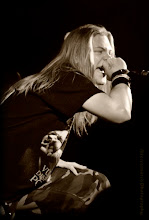In our character design class we have been asked to come up with a backstory for three characters of a randomised theme given to us. My Cartoons theme was "Viking Superheroes", which sounds simple but when coming to make a synopsis these characters appear harder than first presumed. Its a difficult job to ensure I dont tread into "Thor" territory and that steriotypical aspects dont turn the backstory into a bore for the audience.
Im going to ask myself three questions about Vikings create a better understanding on a more collerated level.
Who were they?
"The Vikings came from three countries of Scandinavia: Denmark, Norway and Sweden. The name 'Viking' comes from a language called 'Old Norse' and means 'a pirate raid'. People who went off raiding in ships were said to be 'going Viking'.
The Viking age in European history was about AD 700 to 1100. During this period many Vikings left Scandinavia and travelled to other countries, such as Britain and Ireland. Some went to fight and steal treasure. Others settled in new lands as farmers, craftsmen or traders." - taken from http://www.bbc.co.uk/schools/primaryhistory/vikings/who_were_the_vikings/
"While the term Viking is used in a general way to describe the people of Scandinavia during the medieval period, it's really a name for a profession -- it's like if we called all Spanish or French people Pirates. The Scandinavians were also explorers, farmers, fishermen and merchants -- not just Vikings. Indeed, the people who are usually referred to as Vikings were actually made up of several different groups, including the Danes, the Swedes and the Norwegians, who were themselves often broken into small petty kingdoms." - taken from http://history.howstuffworks.com/european-history/viking1.htm
What did they do?
"The actual Vikings were all men. They used their expertise at seamanship and battle to make raids on the towns and churches of neighboring kingdoms. These raids were part of an intensely masculine, warlike culture that emphasized battle as a way for a man to prove himself." - taken from http://history.howstuffworks.com/european-history/viking1.htm
"Viking meant a pirate. The earliest sea-borne expeditions of the Pagan Norsemen (from Denmark and Sweden as well as Norway, and starting at the end of the 8th century) were essentially violent raids for booty. The attacks on Christian monasteries in the British Isles gave the North men a fearsome reputation. Soon settlers and traders followed the raiders; flourishing towns grew up in places like York and Dublin." - taken from http://www.hunterian.gla.ac.uk/archive/vikings/
What did they look like?
"They were well dressed and well groomed, long haired and bearded, with colored tunics made of wool or linen, and trousers, arm rings, and sometimes capes." - taken from http://wiki.answers.com/Q/What_did_the_vikings_look_like
"The most common image of a Viking is one in full battle dress with armour and weaponry. Protective gear might have included a leather body-protector, for those who could afford it, and additional protection from the knees to the neck was available in the form of a shirt of chain mail, sometimes called a brynie.
Hard leather skull caps were worn by some Vikings, although such things have not been recovered archaeologically. Iron helmets, either hemispherical or conical in shape, and with some form of simple bar projecting down from the forehead to protect the nose, are very rarely found, and are more likely to have been worn by the rich and powerful or the hardened Viking than by an occasional fighter.
A large round shield, averaging about 1m (3ft 3 in) in diameter and made from parallel wooden boards, provided protection for most of the warrior's body. Men would wear a pair of trousers, most likely be made from wool. The tunic they wore would be long sleeved and quite long, perhaps down to the knees. This would be fastened at the neck by a brooch, and tied at the waist with a leather belt. In colder weather a wool or oiled leather cloak might be added to this ensemble." - taken from http://www.jorvik-viking-centre.co.uk/the-vikings/94-/
A more steriotyped Viking would look like this:
Chris



I was scanning your site on Pinterest and just wanted to make a short comment. You may already know this, but Vikings traveled to a lot of other countries besides England and Ireland. To name just a few: Iceland, Greenland, North America (300 years before Columbus), France, Italy, Spain, Russia... They were not just raiders, they where also great explorers and merchants. They were also great mercenaries, see their involvement as warriors in the Varangian guard...
ReplyDelete